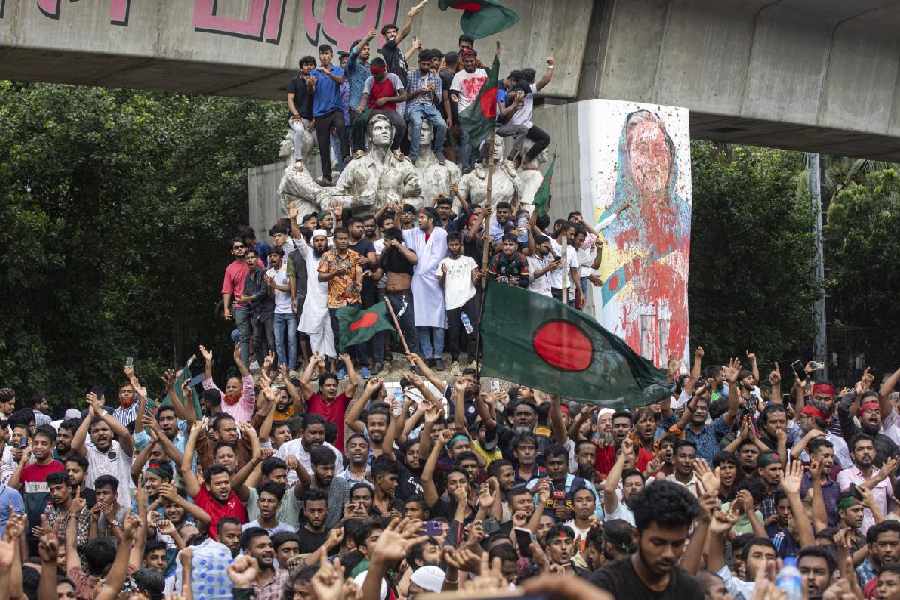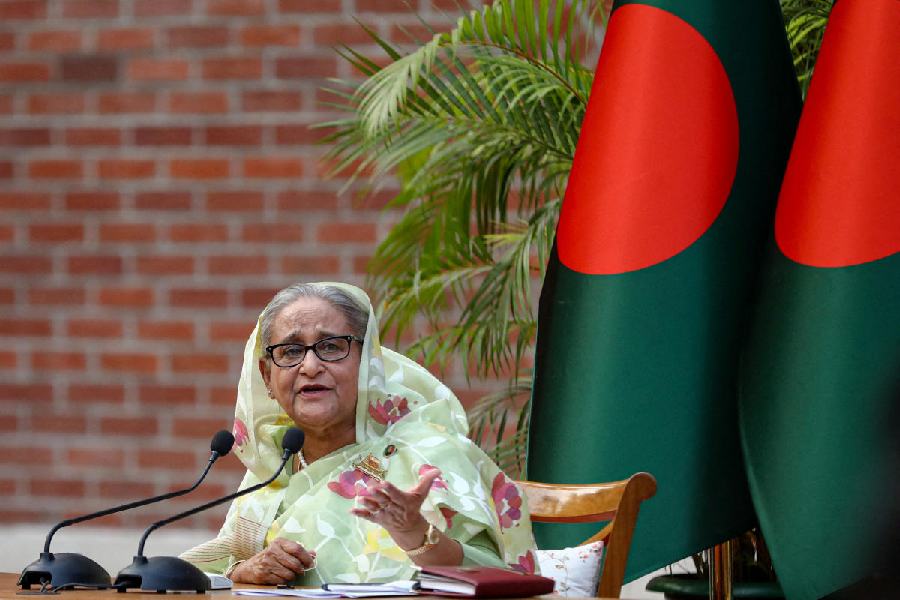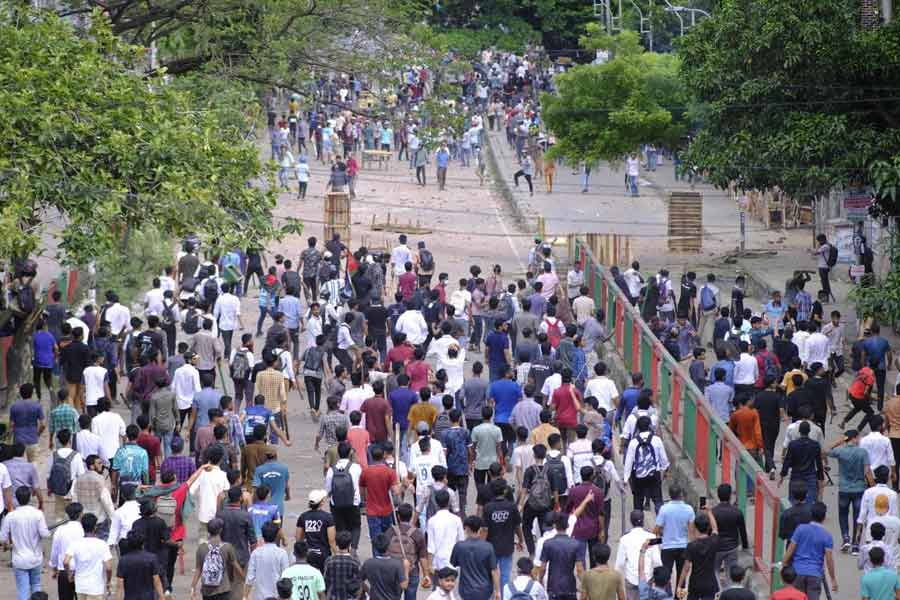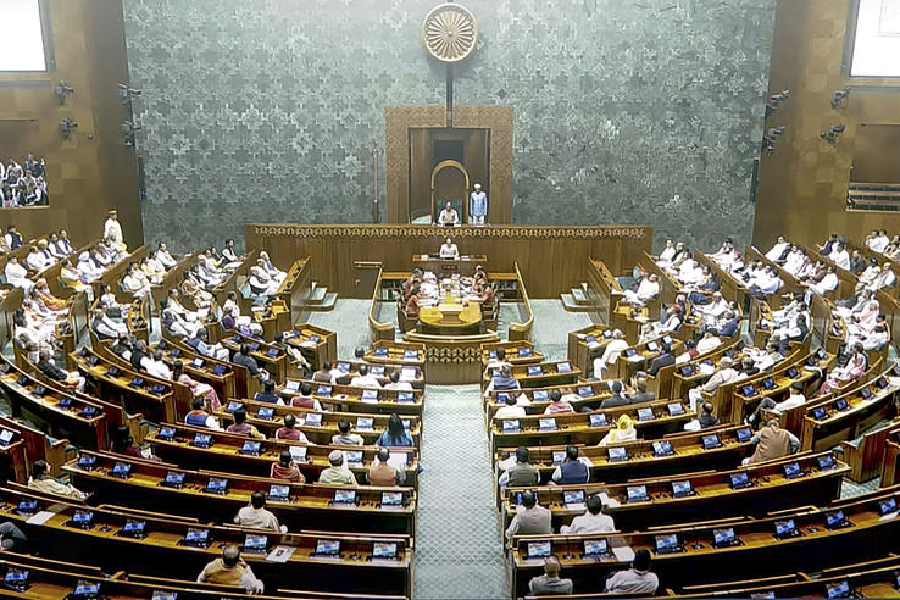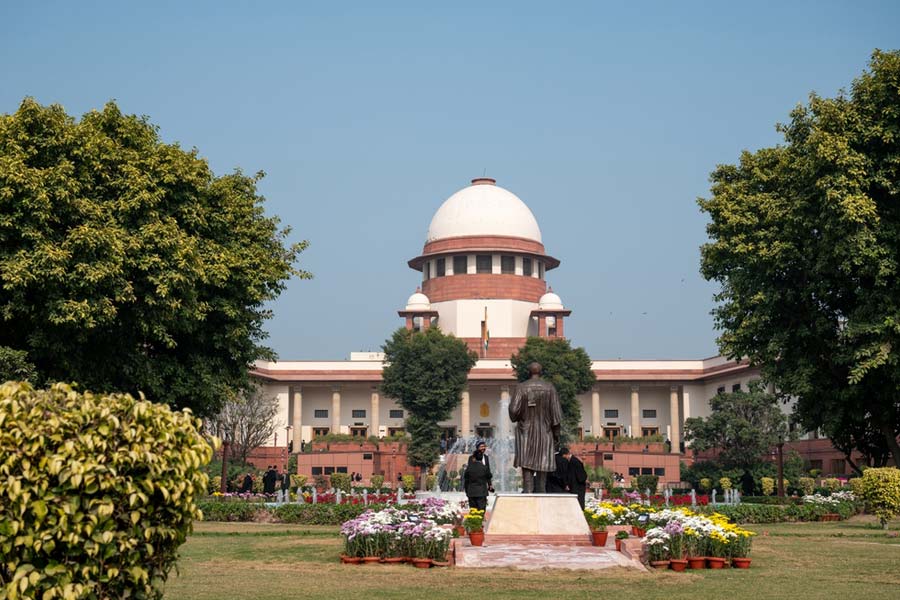A thick and heavy curtain of fear lifted from over Bangladesh as people across the country came out on the streets and cheered after it was reported that Sheikh Hasina had resigned as prime minister and fled the country,
“Can you hear the celebrations?” asked Ayesha Naznin Tanni, speaking over phone from Comilla's Adalatpara, where people banging on drums hit the street and headed for the Town Hall minutes after Bangladesh’s chief of army staff Waqar-uz-Zaman addressed the nation and announced an interim government under the watch of the army.
General Zaman also announced Hasina’s resignation after a 15-year uninterrupted rule from 2009 which saw most of the Opposition leaders put behind bars.
“The kids won,” Dr Md Nadiruzzaman, an assistant professor of health governance at Maastricht University in the Netherlands, who has been in Dhaka since July 11 and participated in the protests, reacted via a text message on Monday afternoon. “However, we cannot let a violent regime be replaced by another violent regime.”
Contrary to the claims of Hasina and the ruling Awami League, the present change of power in the youngest country of this subcontinent came through a movement led primarily by students.
Twenty-five years ago in the month of July, students in Iran came close to overthrowing the regime. It started as a protest against the closure of a reformist newspaper Salam. It led to raids, killing and abduction of students from a student dormitory of the Tehran University.
That movement failed, but the students in Bangladesh succeeded.
In Bangladesh, the groundswell started with a protest against the now-scrapped quota for descendants of the 1971 Bangladesh freedom fighters known as Muktijoddhas. The agitation soon spread. It continued even after the quotas were scrapped by the country’s top court.
The protesters, too, whittled their demand down to just one: The resignation of Sheikh Hasina.
According to official figures some 150 people were killed during the violence which started three weeks ago, though the actual death toll is believed to be much higher.
The Students against Discrimination movement had called for a Long March to Dhaka on Monday amid a nationwide curfew and three-day holiday.
On Monday, soon after Hasina had left her official residence Gono Bhaban, a mob stormed the premises. Offices of Hasina’s party, the Awami League, in Dhaka were also attacked. According to a report by the Dhaka daily Prothom Alo, a museum dedicated to Bangabandhu Sheikh Mujibur Rahman at 32, Dhanmandi was set ablaze by protestors.
“We do not want the army to run the interim government for even an hour,” Abdul Hannan Masud, one of the coordinators of the Students’ Against Discrimination movement, told The Telegraph Online from Dhaka.
“We will try to form the interim government at the earliest with representatives of the students and civil society members who supported us. Our 15-member core team will meet at the soonest to decide the next course,” Masud said.
The interim government, the student leader said, will try and hold fresh elections as soon as possible.
Indian news agency ANI reported that Sheikh Hasina departed from her official residence Bangabhaban around 2.30 pm accompanied by her younger sister, Sheikh Rehana. The Bangladesh army officials in Dhaka did not state publicly where the aircraft was headed.
According to Flightradar data, the helicopter was headed towards Delhi.
The Hasina government had imposed a nationwide curfew from Sunday evening onwards after over 100 more lives were lost in clashes reported from across the country during the day.
Comilla resident Tanni’s house at Adalatpara is about 2 km from the Police Lines in the town where girl students were caught on video asking the townsfolk to open the doors for them. They were allegedly attacked by Chhatra League members.
“On Sunday, tanks had rolled at Biswa Road besides the cantonment to protect the student protesters,” Tanni said.
In Chittagong, where firing went on till late on Saturday night, people burst firecrackers on Monday afternoon when the army chief’s address to the nation was being aired.
A team of cops had raided the home of Lutfun Nahar Anika, a teacher in the mathematics department of Asian University for Women, Chittagong, at exactly 2.30 pm on July 23.
Two weeks later, Anika, scared after the police action and the possible consequences, heaved a sigh of relief at 2.30 pm as reports of the Hasina government’s fall came in.
“The quota movement was a trigger. People from all sectors of the society were disgusted with the corruption of the Hasina government, the high inflation rate. All of us wanted this government to go,” Anika told The Telegraph Online from Chittagong.
During the day ahead of Hasina’s resignation at Dhaka’s Shahbagh, slogans of “Bhua [Fake]” and “Khuni Hasinar Bichar Chai [We demand killer Hasina’s trial]” filled the air.
For now, the kids have won. But what comes next?
“One thing should be clear: this victory was the hard-earned victory of students and the people of Bangladesh. We will not let anyone hijack it. Only students and the people’s representatives have the right to form the interim government,” said Sayed Ahnaf Khan, one of the coordinators of the movement.
Khan said the students will hold talks with representatives of all the political parties, except the Awami League.
“Why will we hold talks with those whom we have evicted?” Khan asked.

